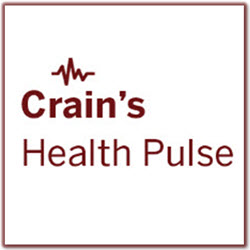Nonprofit Agencies Share Mergers & Acquisitions Lessons
S:US CEO, Donna Colonna, was one of just two CEOs interviewed at length by Arthur Webb, Senior Counselor on Health Care Policy & Service Delivery to Capalino+Company on the major lessons learned in merging, acquiring and absorbing agencies while maintaining financial viability and program integrity. Here is the story as it appears in Crains Health Pulse.
 Source: Crains Health Pulse
Source: Crains Health Pulse
Some 20% of human-services agencies have negative margins, largely because government contracts reimburse too low given the actual cost of doing business in New York.
“You’re talking about a very vulnerable sector,” said Arthur Webb, principal of the consulting firm that bears his name.
With that in mind, Webb has published highlights of interviews on the topic of mergers among human-services nonprofits in New York City. His subjects were Donna Colonna, president and chief executive of Services for the Underserved (S:US), and William Guarinello, who holds those titles at HeartShare. Webb wanted his paper, online here, to capture some of the lessons the two CEOs learned about merging, acquiring and absorbing social-services agencies. S:US acquired Palladia, and is the sole member of Palladia Inc. HeartShare acquired St. Vincent’s Services. In both cases, the added value from the acquisitions was between $40 million and $50 million, according to Webb.
There is no question that the financial pressures on health care services agencies are triggering more M&A talks. For example, Webb recently learned of one agency that quietly wants to work on a three-way merger with two others; a $16 million nonprofit that hopes to be acquired by a $45 million organization in an effort to stem losses and improve cash flow; and two financially strong agencies—one $145 million in size, the other $155 million—that believe they can better survive the future if they merge.
Among the observations that Colonna and Guarinello share is that each merger, of course, is different. But all share the same backbone. Due diligence must include an extensive examination of every asset and obligation. “We met with the banks to understand how we can extend credit or satisfy past obligations,” said Colonna, “and we turned over every payable and receivable. While our early cash estimates were relatively accurate or in the ball park, the actual amount of cash to absorb a $50 million business was sizable.”
Her advice is to seek opportunities to get “in early even before a merger is completed to help stop the bleeding. Get an early engagement and start reducing unnecessary expenses. Get the fixes in early. Even if the merger or acquisition is not consummated, the troubled agency will be better off, if not necessarily to survive, but to be better positioned.”
Guarinello cautioned that even when two agencies are seemingly well aligned—both HeartShare and St. Vincent’s have a Catholic tradition of service—it was still challenging to “assess all the capabilities, management strengths and strategic positioning of the combined agencies. … The lesson learned is that even when you think the values are aligned there will be a banging or clash of cultures as the integration process proceeds.”
